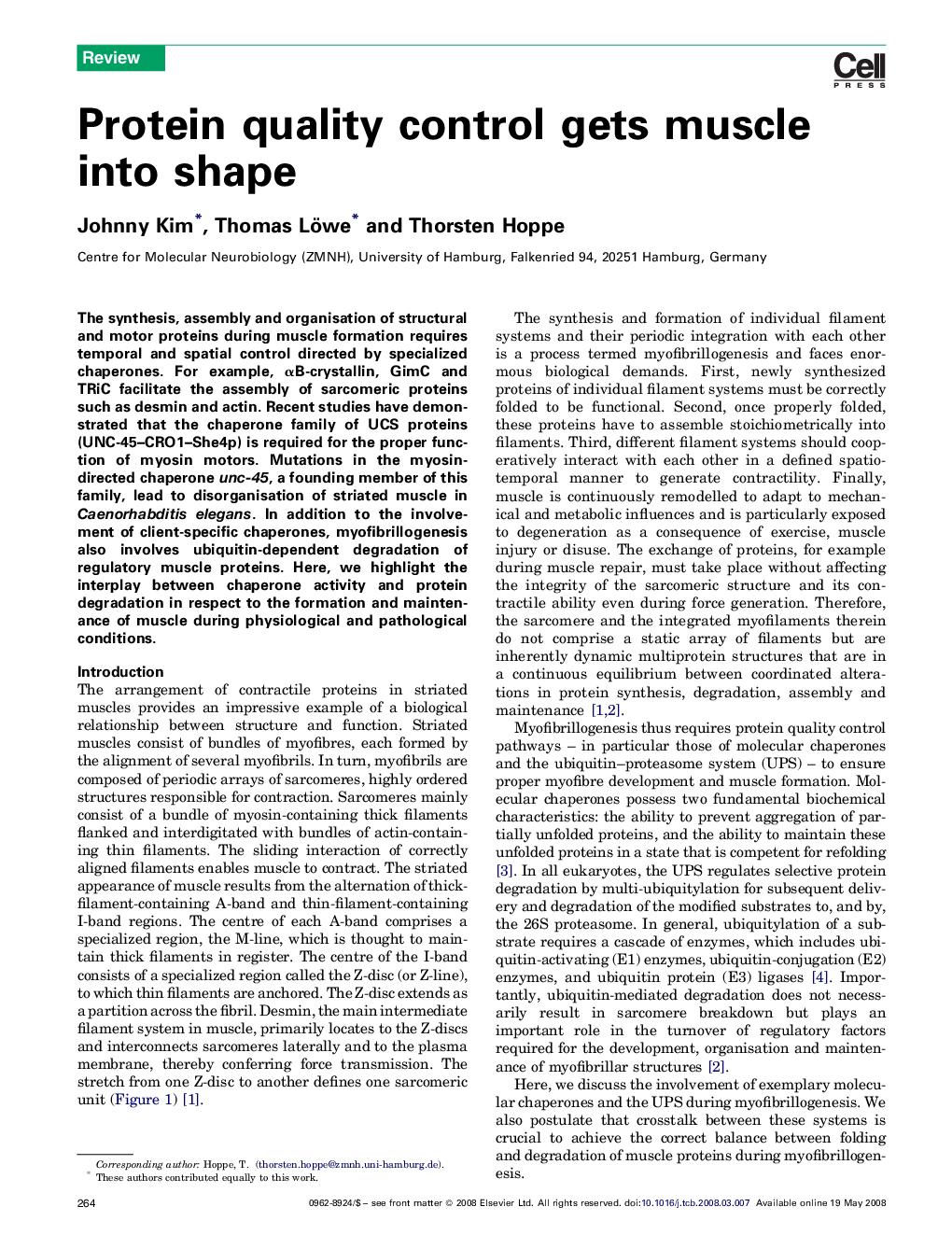| Article ID | Journal | Published Year | Pages | File Type |
|---|---|---|---|---|
| 2205131 | Trends in Cell Biology | 2008 | 9 Pages |
The synthesis, assembly and organisation of structural and motor proteins during muscle formation requires temporal and spatial control directed by specialized chaperones. For example, αB-crystallin, GimC and TRiC facilitate the assembly of sarcomeric proteins such as desmin and actin. Recent studies have demonstrated that the chaperone family of UCS proteins (UNC-45–CRO1–She4p) is required for the proper function of myosin motors. Mutations in the myosin-directed chaperone unc-45, a founding member of this family, lead to disorganisation of striated muscle in Caenorhabditiselegans. In addition to the involvement of client-specific chaperones, myofibrillogenesis also involves ubiquitin-dependent degradation of regulatory muscle proteins. Here, we highlight the interplay between chaperone activity and protein degradation in respect to the formation and maintenance of muscle during physiological and pathological conditions.
